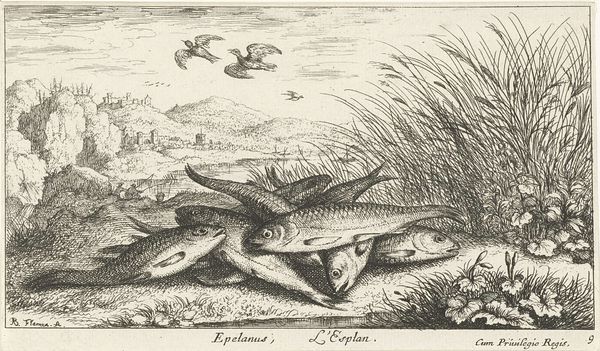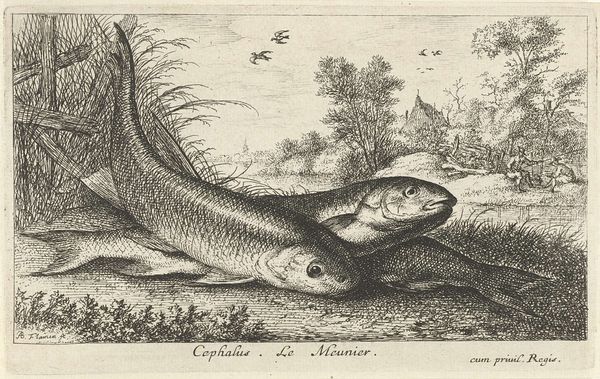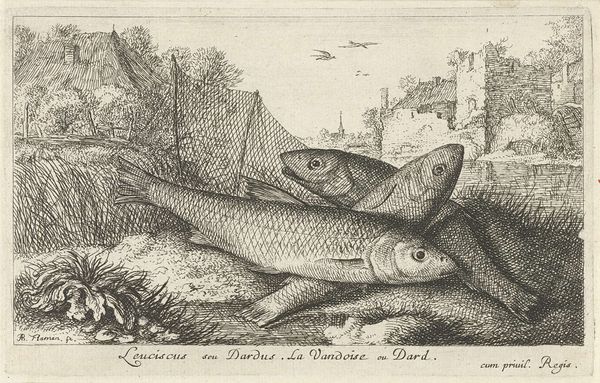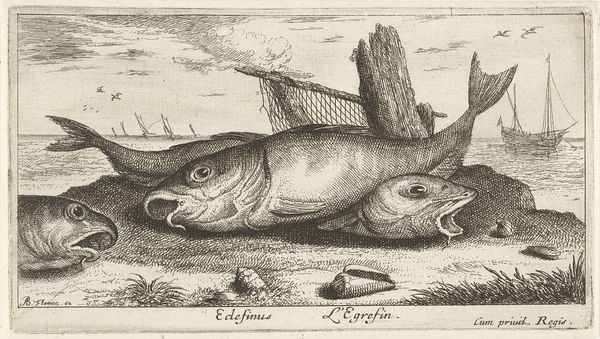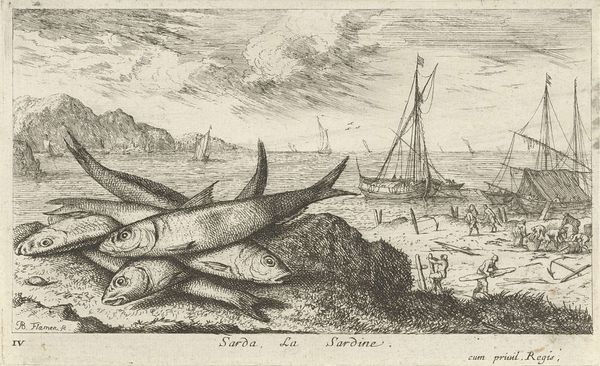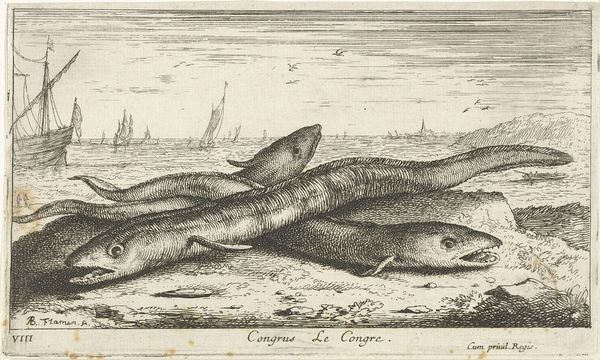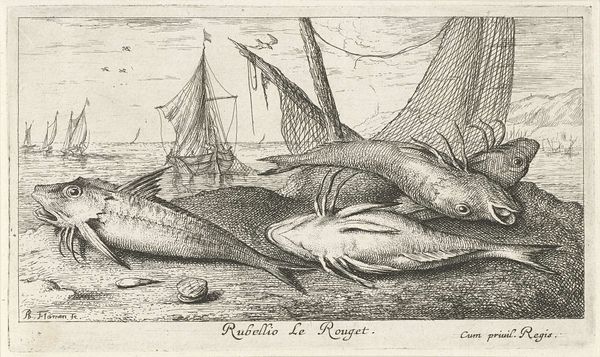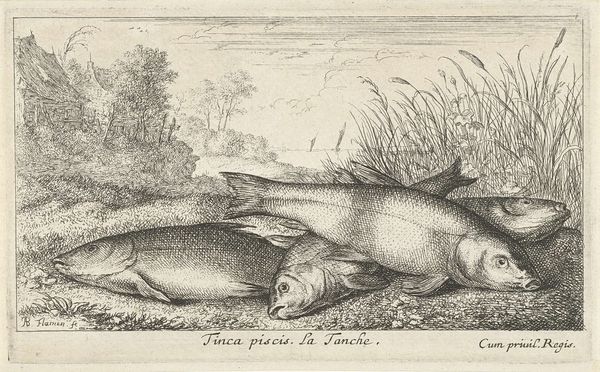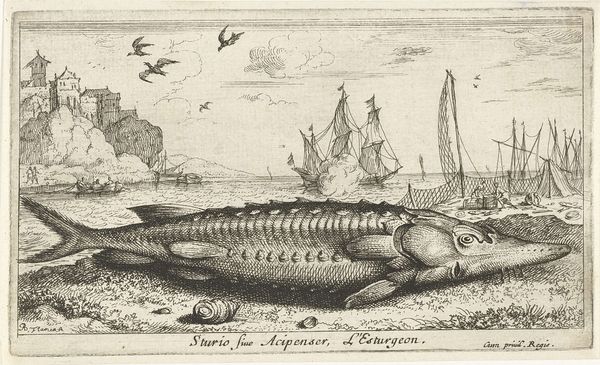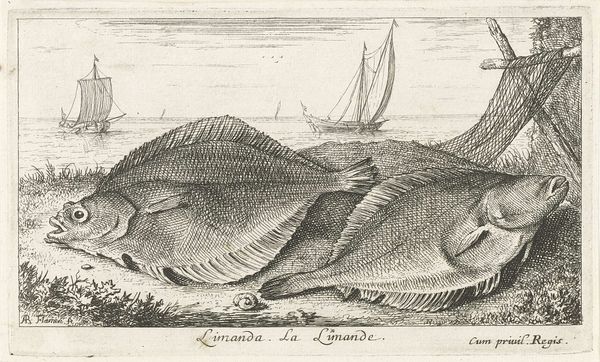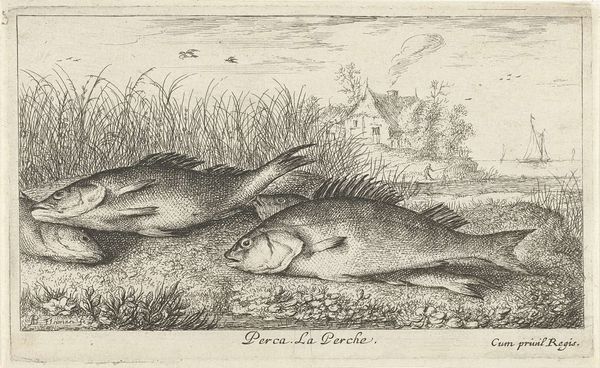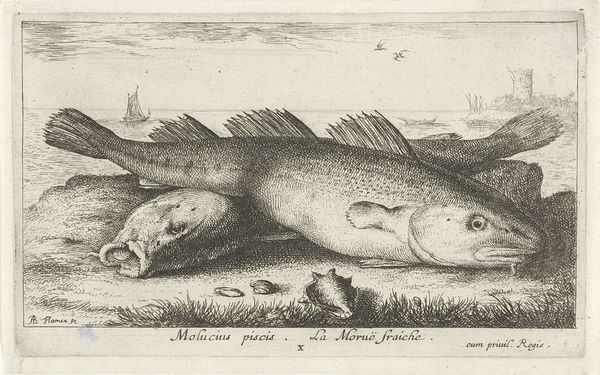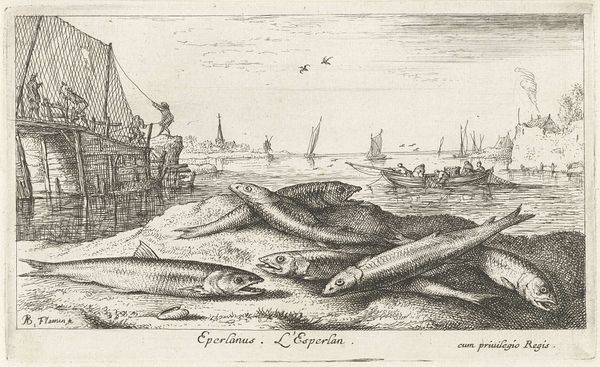
print, etching
#
dutch-golden-age
# print
#
pen sketch
#
etching
#
landscape
#
genre-painting
#
realism
Dimensions: height 103 mm, width 168 mm
Copyright: Rijks Museum: Open Domain
Curator: Immediately striking, isn't it? These silvery bodies juxtaposed against that delicate landscape. Editor: It certainly is arresting. We're looking at "Three Barbel on a Riverbank," an etching and pen sketch by Albert Flamen, created in 1664. The foreground dominates, filled with these freshly caught barbel. Curator: The barbel themselves carry quite a bit of symbolism, wouldn't you say? In some cultures, fish are linked to abundance, prosperity, even spiritual sustenance. And of course, fertility. Their depiction here, arranged almost sacrificially on the bank… is there an inherent comment on man’s dominion over nature, perhaps? Editor: I agree, the arrangement speaks volumes. Yet this wasn't intended to be viewed as "high art," necessarily. During the Dutch Golden Age, scenes of daily life – even something as seemingly simple as freshly caught fish – gained traction in the art market, reflecting a burgeoning middle class and a shift away from solely religious or aristocratic patronage. Curator: Ah, excellent point. This piece gains incredible resonance when considering the broader historical trends. We are witnessing the rise of a new economy—a new societal and political context wherein average citizens become art patrons. Consider how this subject celebrates mundane, quotidian imagery elevated through the status of art. Editor: Looking at how Flamen chose to render it— the fine lines giving texture to the fish scales, the quick strokes defining the distant landscape – it’s clear he wanted to create an image that resonated with viewers on multiple levels. There’s a naturalism, but there’s also an elegance. This connects deeply with cultural ideas surrounding man's control over nature. Curator: Precisely, he masterfully synthesizes aesthetic skill with existing visual paradigms of authority. And you know, reflecting on it this piece acts as an evocative encapsulation of a very particular historical moment in the history of art itself. Editor: A snapshot of both nature and society. Well said.
Comments
No comments
Be the first to comment and join the conversation on the ultimate creative platform.
